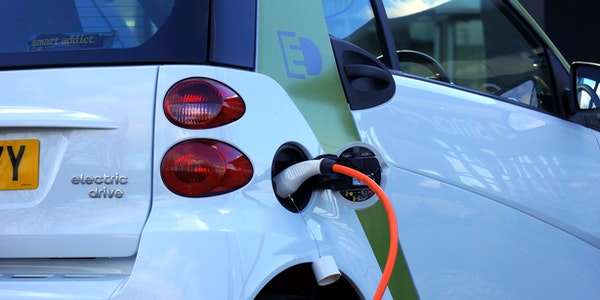A brief analysis of the current status of household energy consumption
Direct household energy consumption and carbon emissions are mainly caused by household activities such as cooking, lighting, heating, bathing, entertainment, and private transportation. Since 1986, the world’s urbanization has entered a mid-term stage of rapid development. With the development of urbanization, the living standards of residents have gradually improved. While incomes have increased, people’s consumption of energy products has also increased, and household direct carbon emissions have also followed. increase. Studies have shown that from 1996 to 2012, total household direct energy consumption and total carbon emissions showed a rapid growth trend, with an average annual growth rate of 4% and 5% respectively. It can be seen that compared with energy consumption, the growth of carbon emissions is faster, which shows that while the total energy consumption is growing rapidly, the energy consumption structure has not been optimized.
Therefore, the ways to reduce household direct energy consumption and carbon emissions can be divided into two aspects: one is to reduce the total amount of household direct energy consumption; the other is to optimize the structure of household direct energy consumption. Specifically, between urban and rural areas, and even between different regions, there will be some emphasis.
Reduce total household direct energy consumption
The main reason for the large total direct energy consumption and carbon emissions of urban households is the large increase in per capita consumption expenditure. Among various types of energy consumption, electricity consumption is gradually occupying a dominant position. It can be seen that the increase in household consumption levels has increased the number of household durable goods such as household appliances and electronic products, which has greatly promoted the increase in direct energy consumption and carbon emissions of urban households.
Since 2000, the number of durable goods per 100 urban households has shown an increasing trend year by year. Among them, household durable goods such as mobile phones, color televisions and air conditioners are used in large quantities, with an average of more than one (unit) per household. The use of household electrical and electronic products has led to the consumption of electricity by urban households.
In addition, with the development of urbanization and the continuous improvement of living standards, residents are pursuing a more convenient and comfortable life, and the number of private cars continues to increase, resulting in a significant increase in the energy consumption of urban transportation. Since 1990, the number of private cars used by urban households in the world has shown a nearly “exponential” increase. In 2003, about one household in every 100 urban households used a car, and in 2014, the number of private cars used by every 100 urban households reached nearly 26. The increase in the use of private cars in cities and towns has led to a significant increase in gasoline consumption in the household sector, especially in areas where urbanization has a high degree of direct household carbon emissions, such as Los Angeles and New York, where gasoline consumption has increased significantly. It should be an important focus of energy conservation and emission reduction for urban households.
Therefore, the main ways for urban households to reduce direct energy consumption and carbon emissions can be to reduce the energy consumption of household appliances and reduce transportation energy.
Ways to reduce energy consumption of household appliances
First, use energy-saving products to reduce energy consumption. The rapid development of urbanization has promoted the rapid increase in the number of household appliances and the increasing variety of household appliances. Therefore, the use of household appliances with energy-saving certification and energy-efficiency labels is an important way to reduce electricity consumption. Due to climatic reasons in the south, compared with the north, the demand for household cooling is greater, so summer cooling consumes more electricity and emits more carbon. Therefore, the promotion of energy-saving home appliances, such as energy-saving electric fans and energy-saving inverter air conditioners, is an important way to reduce direct energy consumption and carbon emissions of southern urban households.
Secondly, advocate saving consciousness and form saving habits. In terms of lighting, buildings can be used for daylighting during the day; it is encouraged to develop the habit of turning off the lights at will, and to cut off the power when not using household appliances to avoid wasting some energy from standby. In terms of heating (cooling), attention should be paid to saving. For example, in the summer (winter) peak of electricity consumption, turn the air conditioner up (down) 1 degree, block doors and windows tightly, and develop good living habits.
Reduce gasoline consumption by traffic
Personal travel is an important behavior in daily social activities, and the rapid increase in the number of private cars has become an important factor leading to the rapid increase in household transportation energy consumption and carbon emissions across the country. Therefore, promoting low-carbon travel and reducing the use of family cars is the best way for families to save energy and reduce emissions in transportation. Better results can be achieved through the development of public transportation and short-distance zero-emission travel.
First, give priority to public transportation. Among all the urban motor vehicle transportation modes, public transportation has the most energy-saving and environmental protection advantages, and is the best choice for low-carbon travel. Government departments must adopt scientific planning to build a safe, convenient, comfortable, fast and economical public transportation system, especially mass transit systems such as rapid transit and rail transit. It is necessary to further invigorate the public transportation industry, improve supporting policies, and guide residents to preferentially choose public transportation by formulating preferential policies for public transportation prices.
Second, encourage short-distance zero-emission travel. Residents should try their best to avoid energy consumption and carbon emissions when traveling in short distances, and they can choose to walk or bicycle as their travel mode. This is not only conducive to the reduction of energy consumption and carbon emissions, but also conducive to people’s health. Cities and towns should continue to improve the distribution of public bicycle stations so that people can rent them; and strictly restrict motor vehicles from occupying non-motorized lanes to ensure the safe travel of pedestrians and bicycles.
Optimize the structure of household direct energy consumption
The rapid development of urbanization promotes the continuous increase of direct energy consumption and carbon emissions of urban households, and at the same time promotes the continuous optimization of the energy consumption structure of urban households. In 1996, raw coal accounted for half of the total direct energy consumption of urban households in the world. In 2012, the proportion of raw coal dropped to 5%, while the proportions of electricity, natural gas and heating increased to 26%, 22%, and 16%, respectively. The proportions of liquefied petroleum gas and gasoline also increased significantly to 12% and 10%. It can be seen that urban households rely less and less on raw coal, and are increasingly inclined to use electricity, natural gas and oil. Among them, natural gas’s carbon emissions account for only half of energy consumption, indicating that natural gas is cleaner and low-carbon compared with other energy types.
To optimize the direct energy consumption structure of urban households, we can start by promoting the use of natural gas and optimizing transportation fuels. At present, many countries have introduced coal-to-gas, a hard indicator of energy saving and emission reduction. However, the use of natural gas has not achieved good results due to a series of problems.
First of all, it is necessary to ensure the construction of natural gas transportation and storage infrastructure, and adhere to the path of internationalization and increase natural gas imports. my country’s natural gas resources are mainly distributed in the western region, while the eastern and central regions of my country have a greater demand for natural gas consumption, so it is necessary to improve the construction of pipeline transportation equipment. In 2012, the total length of urban natural gas pipelines was 456,891 kilometers, 22 times that of 1995. Among them, the urban natural gas pipelines of Minisota, Mississippi, and Wyoming are significantly higher than those of other states, all at more than 30,000 kilometers, while the direct household energy consumption states of Texas, California, and Florida all have natural gas pipelines less than 18,000 kilometers long.
In addition, the total direct energy consumption of North Carolina households is in the middle, but the natural gas pipeline is the shortest, less than 3,200 kilometers. In addition, underground gas storage has a regulating effect on peak use of natural gas. Currently, only six underground gas storages have been put into operation, and the scale and technology of the construction of the storage must be further improved.
Second, further improve the natural gas pricing mechanism. At present, the price of natural gas is set by the central government and local governments according to the natural flow of natural gas supply, and the pricing is mainly based on the cost plus method. The characteristics of urban consumers should be taken into consideration on the basis of comprehensive costs to promote further marketization of natural gas prices. Due to the different levels of urbanization in different regions, the elasticity of natural gas demand also has certain differences. Therefore, the price of natural gas in different regions should also have large differences, which is conducive to saving gas.
Finally, encourage the purchase of new energy vehicles. 57% of the world’s oil extraction is used in road transportation. The massive consumption of oil by transportation not only accelerates the rate of energy depletion, but is also accompanied by an increase in carbon emissions. Therefore, the development of new alternative fuels, such as compressed natural gas, liquefied petroleum gas and other clean fuels, is an important measure to reduce household gasoline consumption. In addition, by vigorously developing electric vehicles and hybrid electric vehicles, energy consumption and carbon emissions can be reduced to a certain extent. Petroleum consumed by family cars is a non-renewable energy source, and alternatives to ethanol or electricity can also be considered.


